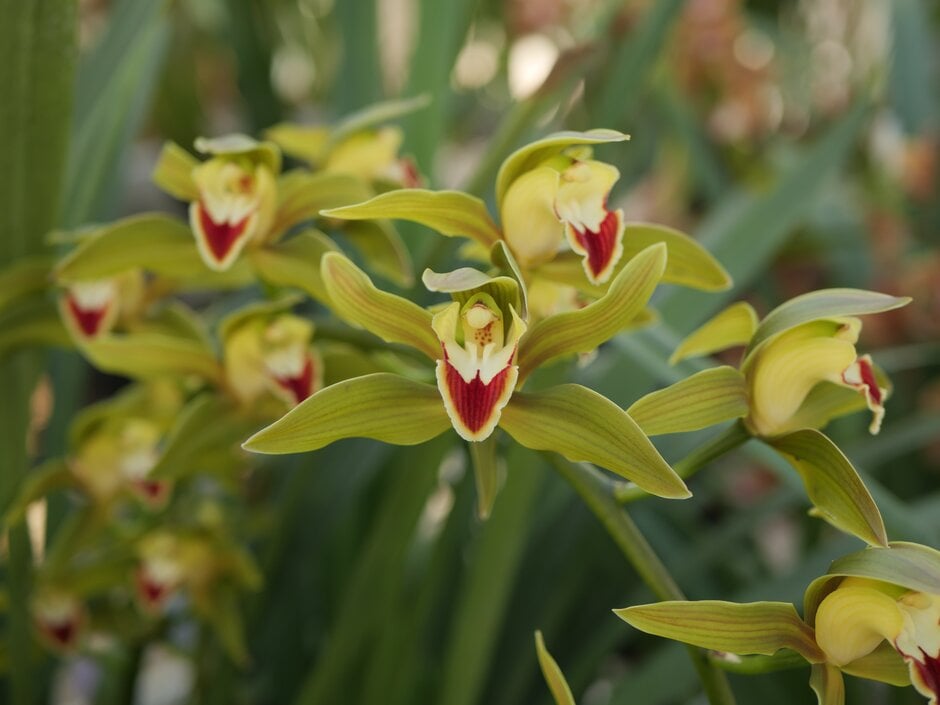Cymbidium lowianum
Low's boat orchid
A large lithophytic or epiphytic orchid species to 90cm tall, preferring cooler conditions for optimum growth. Ovoid pseudobulbs and linear leaves to 75cm and apple-green flowers with a dark-red edge to the lip are produced on long, arching stems any time from autumn through to late winter or spring
Size
Ultimate height
0.5–1 metresTime to ultimate height
2–5 yearsUltimate spread
0.5–1 metresGrowing conditions
Moisture
Well–drainedpH
NeutralColour & scent
| Stem | Flower | Foliage | Fruit | |
| Spring | Green | |||
|---|---|---|---|---|
| Summer | Green | |||
| Autumn | Green | Green Red | Green | |
| Winter | Green | Green Red | Green |
Position
- Partial shade
Aspect
West–facing or East–facing
Exposure
Sheltered Hardiness
H1CBotanical details
- Family
- Orchidaceae
- Native to GB / Ireland
- No
- Foliage
- Evergreen
- Habit
- Clump forming
- Potentially harmful
- Skin allergen. Wear gloves and other protective equipment when handling
- Genus
Cymbidium are epiphytic, lithophytic or terrestrial orchids with prominent spherical to ovoid pseudobulbs, long linear leaves and fleshy white roots. Several long lasting showy flowers with a distinctive 3-lobed lip are borne on erect or arching flower spikes from the bases of the pseudobulbs
- Name status
Correct
- Plant range
- China (S. Yunnan) to N. Indo-China
How to grow
Cultivation
Requires day temperatures around 16°C and 10°C at night. Provide good light levels, but avoid direct sunlight. Pot firmly into epiphytic or terrestrial orchid compost, water thoroughly when compost is almost dry, allow to drain and use orchid fertiliser at every third watering. Water sparingly in winter. Place outside in dappled shade during the summer months to aid flower initiation. See cymbidium cultivation
Propagation
Propagate by division of pseudobulbs when pot-bound or repotting
Suggested planting locations and garden types
- Houseplants
- Patio and container plants
- Conservatory and greenhouse
Pruning
No pruning required, cut down flowered stems to base
Pests
May be susceptible to aphids, glasshouse red spider mite, scale insects and mealybugs
Diseases
Generally disease-free. Sterilising cutting tools may prevent virus diseases, such as Cymbidium Mosaic Virus (CMV).
Love gardening
Sign up to receive regular gardening tips, inspiration, offers and more
View our Privacy Policy
Get involved
The Royal Horticultural Society is the UK’s leading gardening charity. We aim to enrich everyone’s life through plants, and make the UK a greener and more beautiful place.
